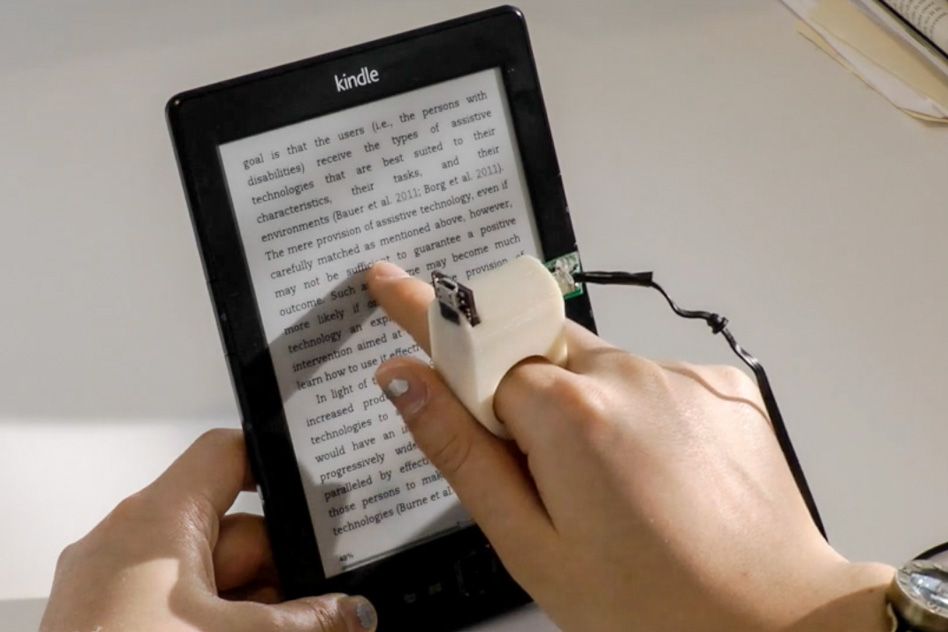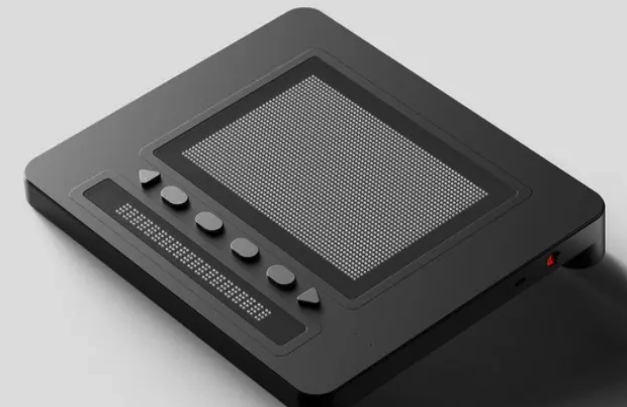Voice-Activated Assistive Devices: Simplifying Everyday Tasks
Voice-Activated Assistive Devices: Simplifying Everyday Tasks
Blog Article
Discover Cutting-edge Tools Developed for the Visually Damaged
The growth of ingenious devices for the aesthetically damaged stands for a substantial development in ease of access and self-reliance. Technologies such as smart glasses with AI capabilities and mobile applications developed to give acoustic summaries are reshaping everyday experiences for customers.
Smart Glasses for Navigation

Smart glasses developed for navigating are changing the method visually impaired people interact with their setting. These advanced devices utilize a mix of electronic camera modern technology, fabricated intelligence, and acoustic responses to supply real-time details concerning surroundings. By utilizing barrier detection systems, smart glasses can notify customers to potential hazards, allowing more secure movement in both unknown and familiar setups.
The integration of GPS innovation better boosts navigation capacities, allowing customers to receive auditory directions as they relocate. This hands-free technique not just cultivates independence but likewise equips visually impaired people to browse metropolitan landscapes with increased confidence. Furthermore, lots of clever glasses are geared up with functions that determine spots and street indicators, supplying contextual information that boosts the individual experience.
Furthermore, the growth of these tools is continually progressing, with companies working to enhance the accuracy of things recognition and broaden the variety of navigational attributes. As clever glasses end up being a lot more budget friendly and obtainable, they hold the potential to significantly transform day-to-day live for aesthetically impaired customers. Eventually, these innovative devices stand for a critical action toward inclusivity, offering enhanced movement and a greater sense of autonomy for individuals navigating the world around them.

Mobile Application for Daily Living
Just how can mobile applications improve the lives of visually damaged people? Mobile applications are revolutionizing the means visually damaged users navigate their settings, manage everyday jobs, and gain access to information. These applications offer essential assistance through different capabilities, fostering self-reliance and improving lifestyle.
Several ingenious mobile applications are developed particularly for daily living. As an example, applications like Be My Eyes connect visually impaired individuals with sighted volunteers using video clip telephone calls, enabling them to obtain real-time help with jobs such as checking out tags or browsing strange spaces. Seeing AI, developed by Microsoft, uses artificial knowledge to describe surroundings, checked out text, and recognize objects, successfully transforming a smartphone right into a powerful tool for daily help.
Furthermore, navigating apps customized for the aesthetically damaged, such as Aira and BlindSquare, supply audio-based directions and ecological info, allowing individuals to traverse their environments securely and confidently. Past navigation and prompt support, mobile applications additionally sustain company and task administration, with functions that assist users establish tips, develop order of business, and track visits. In summary, mobile applications offer as essential resources, empowering visually damaged people to lead more independent and meeting lives.
Wearable Technologies for Support
Empowerment through technology is significantly apparent in the world of wearable devices made to help visually impaired individuals. These ingenious tools integrate effortlessly into life, boosting navigating and providing crucial responses to users. For example, smart glasses outfitted with cams can recognize faces and read text aloud, permitting individuals to connect even more with confidence in social and professional setups.
One more notable innovation is making use of haptic responses systems in wearable devices. These systems utilize resonances or other responsive signals to share information regarding the user's atmosphere, such as challenges or adjustments in terrain, improving movement and safety. Wearable technologies additionally consist of wristbands that attach to smartphones, signaling customers to notifications through refined resonances, therefore enhancing connectivity without dependence on aesthetic hints.
As these technologies remain to develop, they are not only improving freedom for aesthetically impaired individuals but likewise fostering a higher feeling of incorporation in culture. By bridging the gap between obstacles dealt with in everyday living and the possibility for autonomy, wearable modern technologies act as pivotal devices in the mission for equal rights and empowerment for those with aesthetic impairments.
Audio Description Devices
Audio description tools play a critical function in enhancing accessibility for visually damaged individuals, giving them with the capacity to involve with aesthetic media. OCR devices for the blind. These tools provide narrated descriptions of essential visual components in movies, television programs, and live performances, making sure that customers can completely comprehend the context and emotions shared through visuals
Sound summary can be integrated right into numerous platforms, including streaming services, movie theater testings, and live theater. Many prominent streaming solutions now include audio summary as an access attribute, allowing customers to pick it quickly. Along with traditional media, specialized applications additionally exist, providing audio descriptions for art exhibitions, museums, and other cultural events.
The performance of audio summary rests on the ability of the storytellers, who must communicate aesthetic details succinctly without interfering with the initial audio. Technologies in this area are likewise leading the way for even more individualized experiences, where customers can change the degree of detail and pacing according to their preferences.
Braille Innovations and Devices
Braille advancements and devices have dramatically changed the way visually damaged individuals communicate with message try here and information. Modern advancements have actually caused the development of versatile devices that boost literacy and click this link self-reliance among customers. Notably, Braille display technologies have progressed, permitting for dynamic analysis experiences. These devices transform electronic text right into Braille, allowing individuals to access a large selection of information on tablets, smart devices, and computer systems.
Additionally, portable Braille notetakers combine typical Braille input with contemporary performances, assisting in note-taking, scheduling, and record editing on the go. Assistive technology for the blind. These portable tools frequently feature text-to-speech capabilities, connecting the space between Braille and auditory info
Additionally, innovative Braille printers have actually arised, allowing individuals to create Braille tags, papers, and instructional materials efficiently. This ease of access cultivates greater participation in academic and specialist atmospheres, eventually advertising inclusivity.
In addition, study right into wise Braille modern technologies remains to increase. Instruments that incorporate artificial intelligence are being explored to provide real-time navigation aid and contextual info, boosting the customer experience in diverse setups. Generally, these developments mirror a dedication to equipping aesthetically damaged individuals through technology, guaranteeing they can quickly gain access to and engage with the world around them.

Verdict
The improvement of innovative devices for the aesthetically impaired considerably improves self-reliance and quality of life. These modern technologies not only foster better inclusion yet likewise advertise autonomy in everyday activities, eventually adding to a more equitable and easily accessible culture for visually impaired people.
As smart glasses end up being extra budget-friendly and obtainable, they hold the prospective to substantially change daily life for visually impaired users. Mobile apps are changing the means aesthetically impaired individuals browse their settings, manage everyday jobs, and accessibility information. Apps like Be My Eyes link aesthetically damaged customers with sighted volunteers by means of video calls, enabling them to get real-time help with jobs such moved here as reviewing tags or browsing strange areas.Furthermore, navigating applications tailored for the aesthetically damaged, such as Aira and BlindSquare, supply audio-based instructions and ecological information, allowing individuals to traverse their environments safely and confidently.The improvement of ingenious devices for the visually impaired substantially improves self-reliance and high quality of life.
Report this page